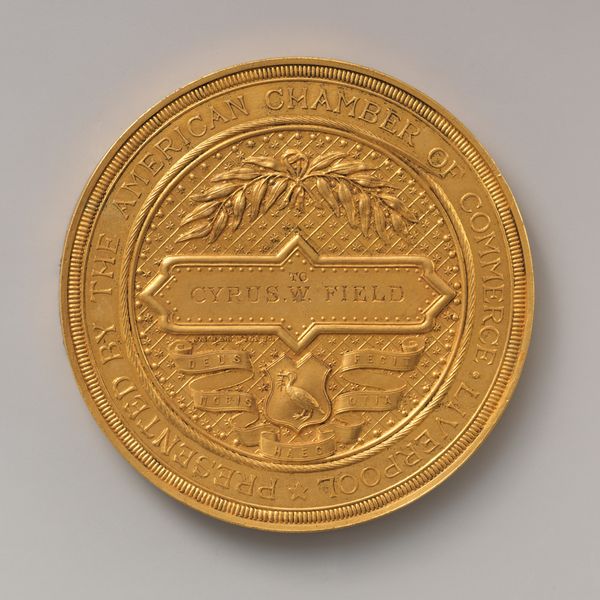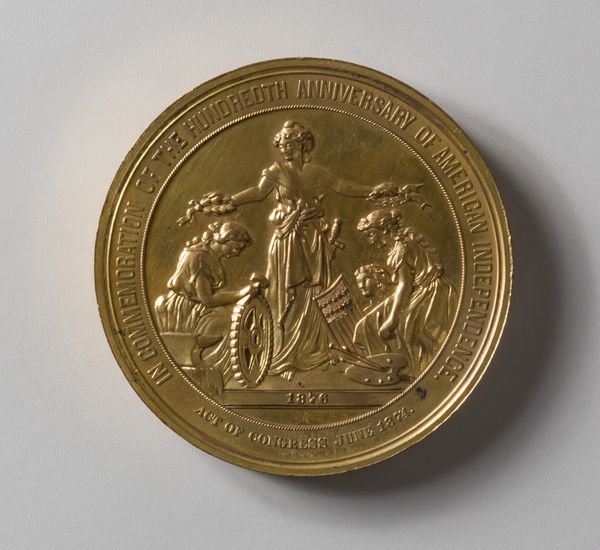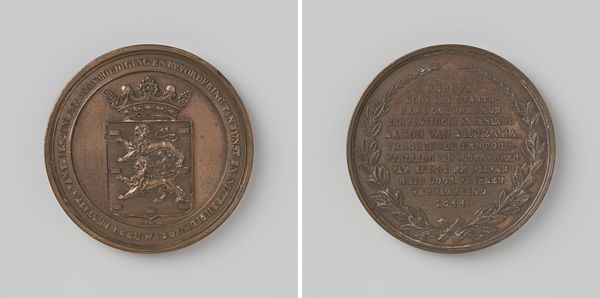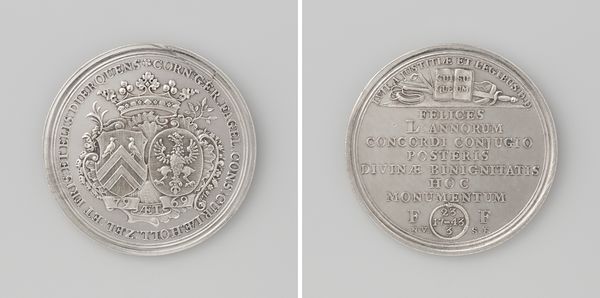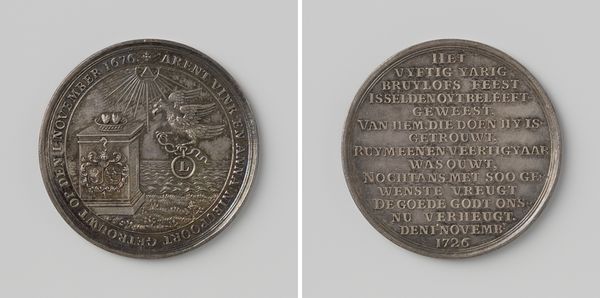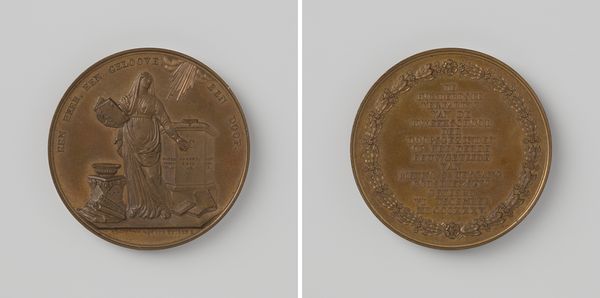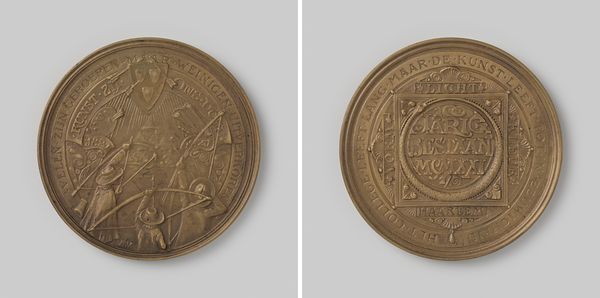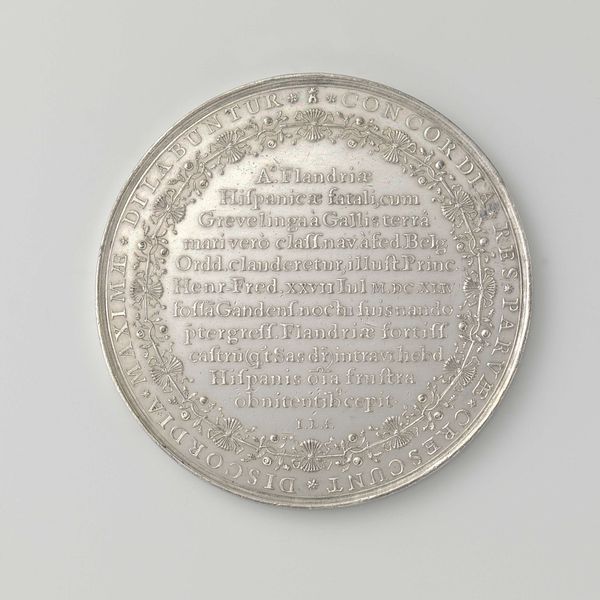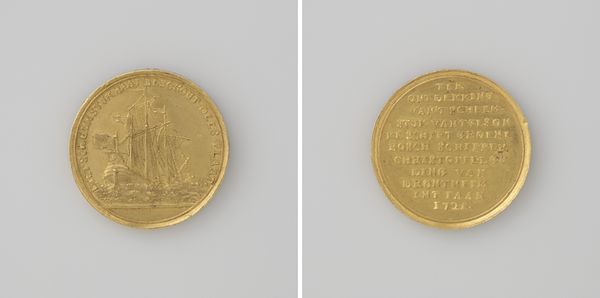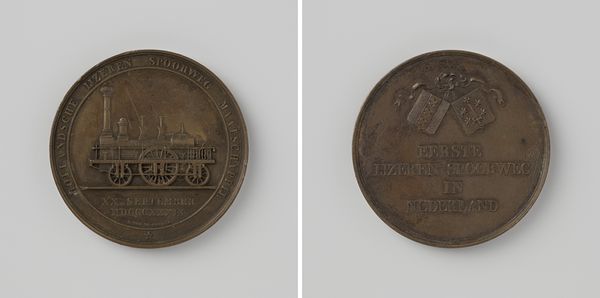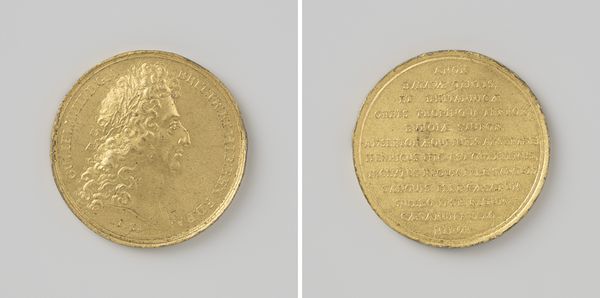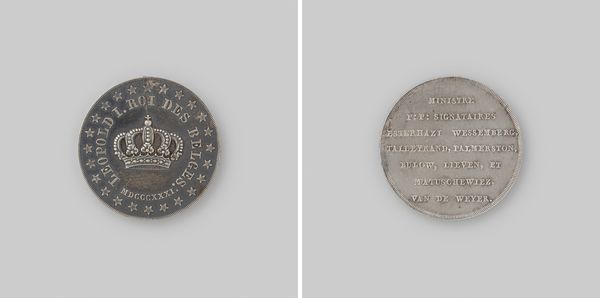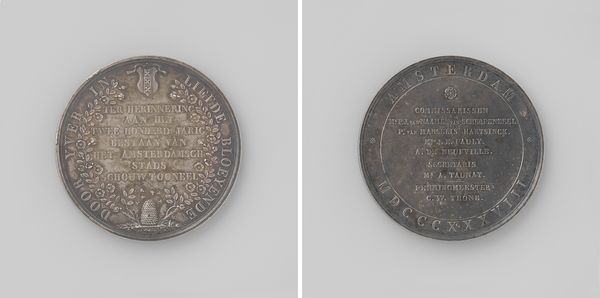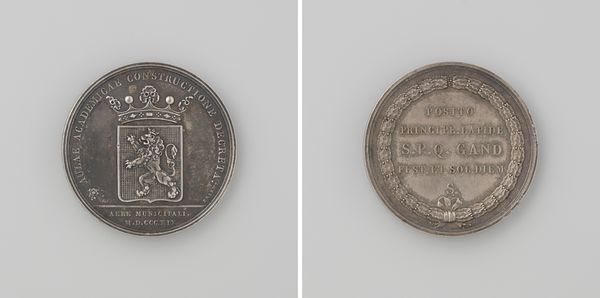
To Cyrus W. Field from New York Friends, for Laying the First Atlantic Cable 1858
0:00
0:00
print, metal, sculpture
#
neoclacissism
# print
#
metal
#
sculpture
Dimensions: Diam. 2 in. (5.1 cm)
Copyright: Public Domain
Curator: At first glance, there's an undeniable sense of celebratory grandeur evoked by this medal. The choice of a warm, light-reflecting material contributes to this sensation of importance. Editor: Indeed. The Metropolitan Museum of Art is home to this medal commemorating Cyrus W. Field for his instrumental role in laying the first transatlantic cable in 1858. It was crafted by George Hampden Lovett, a work presented to Field by his New York associates. Curator: From a formalist perspective, the circular composition creates an immediate sense of wholeness, emphasizing the unity of purpose achieved by laying the cable. Note how the typography echoes that unity in a circular textual arrangement. The subtle textures, especially the laurel wreath, frame the event elegantly. Editor: The laurel, an emblem of triumph and achievement from antiquity, is particularly poignant here. In a broader sense, this medal functions as an emblem of human innovation bridging divides. The inscription "NIL DESPERANDUM PERSEVERANTIA VINCIT" translates to "Nothing to be despaired of while perseverance conquers" serving almost like a spell against doubt, solidifying perseverance as a heroic quality. Curator: Notice the minute details. The raised lettering casts delicate shadows, enhancing the medal's tactile dimensionality. Each letter participates in an orchestration of texture and form. The strategic use of space guides our eye, controlling the pace at which we absorb the historical narrative embedded in the object. Editor: And consider the psychological weight carried within such a token. It is a personal thank you made material. This item becomes more than just a historical record. It is an icon of connection in an ever-changing world, mirroring our longing for immediacy. It’s a reminder that big change happens through tiny actions done in the face of potential despair. Curator: Precisely! And upon considering its aesthetic unity in conjunction with its historical importance, the artwork provides an incredibly rewarding aesthetic and intellectual experience. Editor: Ultimately, through a synthesis of symbolism and structure, it transforms a physical artifact into a potent representation of both historical achievement and timeless ideals.
Comments
No comments
Be the first to comment and join the conversation on the ultimate creative platform.
